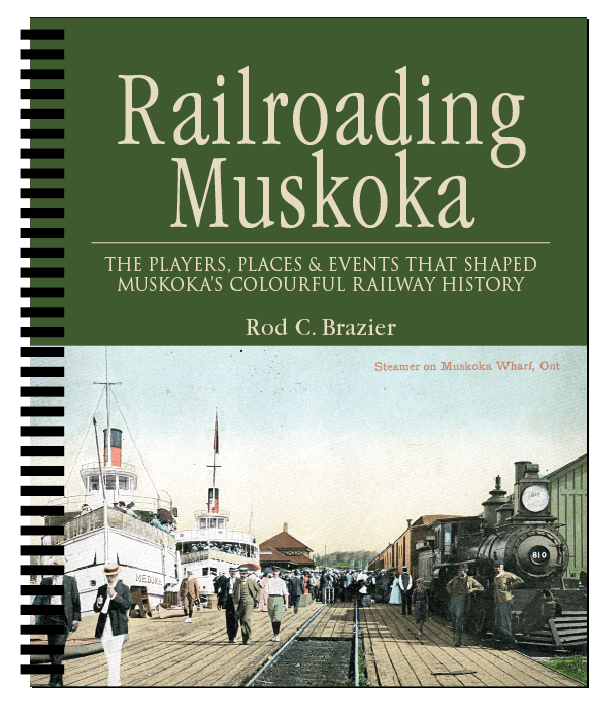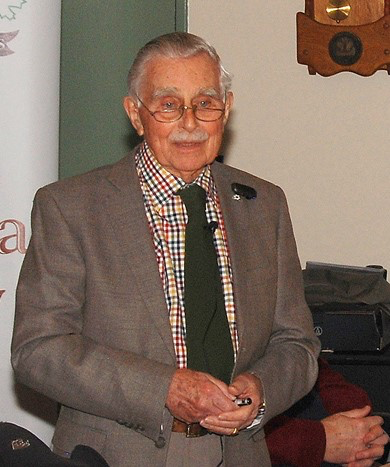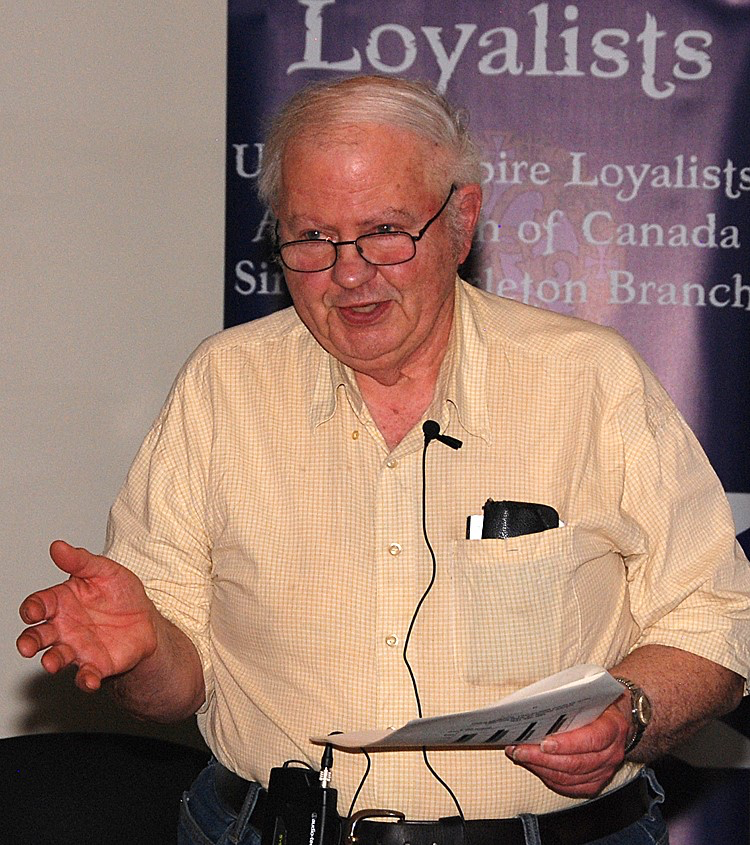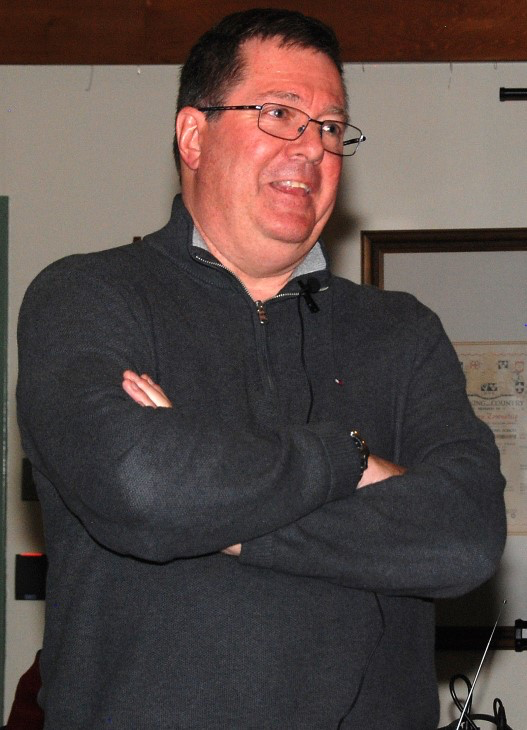3 Presentations: Commemorating Rideau Sappers & Miners at Newboro; Validating UEL Lineage; Railways in Muskoka
Presentations by Dr. Dennis Osmond, Gary Bagley and Rod Brazier. Article by Pat Earl, photos by Maureen McPhee. March, 2018.
A full house, at the City of Ottawa Client Centre in North Gower, was treated to three gifted speakers, all members of the Rideau Township Historical Society.
The first speaker, Dr. Dennis Osmond, spoke on the commemoration of Sappers and Miners who worked on the Rideau Canal at Newboro. The canal, which ran from the Rideau River at the Ottawa end climbing one hundred and sixty kilometers and then descending one hundred and forty kilometers to the Cataraqui River at the Kingston end, passed through wild terrain which consisted of thin soil and hard rock. These obstacles, plus workers being struck down with malaria, caused contractors to quit. Col. By then hired two hundred labourers and Sappers from the 7th Company Royal Sappers and Miners. After raising the level of Rideau Lake and putting a lock at the south end, these industrious men completed the task at hand. Thirteen Sappers died on the job and were buried in Newboro, but the grave markers were lost over the years
In 2014, it was decided to renovate the local cemetery in Newboro and commemorate the soldiers buried there. Thirty- eight graves were identified by radar and eighty volunteers cleaned the grounds and repaired the plots and stones. One artifact .that was found was a British Ordnance Stone used while surveying the canal site in the 1800s.
Dr. Osmond had in his possession a list of the thirteen Sappers who died, where they were from and what their occupations were before coming to Canada. Causes of deaths were also listed, most being of natural causes and two deaths by black powder explosions.
An unveiling ceremony of a memorial stone was held at the cemetery on July 19,2017. Dr. and Mrs. Osmond were in attendance along with politicians, military members, legionnaires and musicians.
Pictures of canal maps, workmen on the canal and Sappers in uniform completed Dr. Osmond’s presentation.
Our second speaker was Gary Bagley, membership director of the RTHS. Gary is a genealogist with the Sir Guy Carleton Branch of United Empire Loyalists. His job is to verify application forms for those who say they are descendants of U.E.L. folks.
Loyalists were settlers who came to the United States. They were known to be loyal to the crown and were zealous respecters of law and order. Later in the late 1700s, they left the thirteen colonies and moved to Canada settling in Ontario and the eastern areas where they would be behind British lines. Most were given land grants of two hundred acres.
Folks today who want to be known as descendants of Empire Loyalists have to go through a rigorous procedure of paper work before attaining U.E. (unity of Empire) status. Gary’s job is to vet each application, many which are hard to prove. If approved, the person receives a U.E. certificate. Some of these folks later take part in re-enactments portraying their ancestors.
The last speaker of the evening was Rod Brazier who spoke on Railways in Muskoka. Rod’s interest in this RR system was peaked when he was asked to write a 1500 word article on RRs in Muskoka. He soon found he had much more to say and in the end a book was published in May 2017.

Muskoka is an area in Ontario that stretches from Algonquin Park to Georgian Bay, first surveyed by David Thompson in 1837. In 1853, Muskoka got its first colonization road and settlers arrived the following year. In 1865, Alexander Peter Cockbourn toured the shores of Muskoka and determined to build a steamship by the next year. This he did and the Winona made its maiden voyage the following summer.
Cockbourn, a jack of all trades, was involved in transportation, commerce, tourism, settlement and government in the Muskoka area. The Northern Railway of Canada at the time extended only as far as Barrie, so in 1869, Cockbourn along with ten other men got a charter to build a railway from Couchiching to Bracebridge as a ploy to encourage the CNR to extend their line to Muskoka. As a result, they received a promise that there would be a Simcoe & Muskoka line built. After much discussion on how to connect with the transcontinental RR, in 1872 with Cockbourn as a federal representative, the CPR was incorporated and the railway reached Washago.
By 1875, a railway line had been built as far as Gravenhurst, and for the next ten years nothing more was done. Between 1875 and 1908 twelve RR charters were slated for Muskoka but of these only three were built. Money to build these lines came from Britain and once war began, money stopped, as did RR construction. As motorized vehicles began appearing, and roads and highways were developed and/or improved, Muskoka remained a popular tourist destination but fewer and fewer folks traveled by rail. By 1953 there were no trains going to Muskoka and in 1959 the train station at Muskoka Wharf was demolished.
Dorothy Gray thanked our speakers for a most entertaining and informative evening



